Warehouse Automation – Types, Benefits, And Trends

Are you looking to automate parts of your warehouse? It’s not that difficult anymore to get started with warehouse automation and technology has proven that investments are worth making. No matter how big or small your warehouse is, there are always options to automate repetitive tasks and improve the flow of goods.
Let’s have a look at the benefits of warehouse automation, the different categories, trends, and how you can get started.
Let’s get started!
Chapters
- What Is Warehouse Automation?
- Why Should Businesses Start With Warehouse Automation?
- What are the Warehouse Automation Categories?
- What are the Warehouse Automation Types?
- How to Start with Warehouse Automation
- What are the main Warehouse Automation Trends?
- Warehouse Automation Statistics
- FAQ
- Other related articles
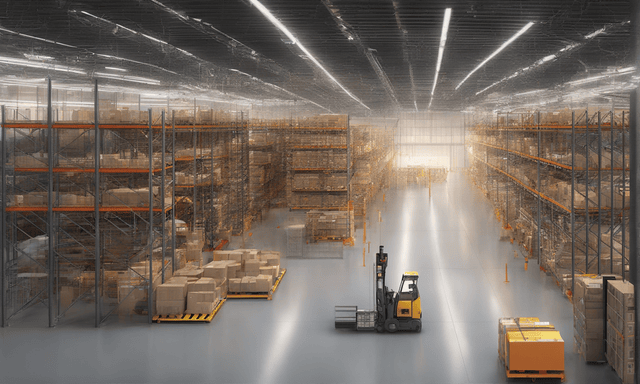
What Is Warehouse Automation?
Warehouse automation is a process designed to optimize inventory flow within, between, and out of warehouses. All while reducing the need for extensive human intervention.
Through strategic automation initiatives, businesses can bid farewell to labor-intensive responsibilities, including monotonous physical exertions (which can lead to a number of health risks) and the manual intricacies of data input and analysis.

Why Should Businesses Start With Warehouse Automation?
In the dynamic landscape of modern business, seizing opportunities isn’t just a strategy; it’s a necessity. Enter warehouse automation – the pivotal choice that empowers enterprises to surge ahead, leaving competitors in the dust. But why should your business take this transformative leap? Here’s a compelling chorus of reasons:
- Elevate Efficiency to Unprecedented Heights: Imagine your operations running like a well-oiled machine, every process seamlessly synchronized. With automation, mundane tasks are relegated to the past, freeing your workforce to focus on high-value activities. This enhanced efficiency translates into rapid order fulfillment, delighted customers, and a surge in productivity.
- Precision that Defies Errors: Inaccuracy is the Achilles’ heel of logistics. Warehouse automation eradicates this Achilles’ heel. Robots don’t tire, software doesn’t falter, and the result is pinpoint accuracy. Say goodbye to costly mistakes, returns, and dissatisfied customers.
- Unleash the Power of Data: The modern business landscape thrives on data-driven decisions. Warehouse automation arms you with real-time insights into inventory movement, trends, and performance. This treasure trove of data fuels strategic moves that keep you ahead of market shifts.
- Ramp Up Scalability with Ease: Growth is the goal, but it should never be a stumbling block. Automation scales effortlessly with your business. Handling increased demand or diversifying your product range becomes a breeze, ensuring that growth is a well-managed ascent, not a chaotic scramble.
- Talent Redefined: Your workforce is your greatest asset, and automation elevates their role. By delegating repetitive tasks to machines, you empower your team to engage in creative problem-solving, innovation, and customer interaction – the heartbeat of any thriving business.
- Costs Conquered, Profits Propelled: Let’s talk about the bottom line. Warehouse automation optimizes resource utilization. Reduced labor costs, minimized errors, and efficient inventory management chip away at overheads, boosting your profit margins.
- Future-Proof Your Endeavor: The future demands agility and adaptability. Embracing automation positions your business as a future-ready force. Innovations like AI, predictive analytics, and vision guided robotics are constantly evolving – and you’ll be at the forefront, not struggling to catch up.
In the symphony of business excellence, warehouse automation plays a leading role. It orchestrates harmony between human expertise and technological prowess, propelling your business toward a crescendo of success. Don’t just keep up with the times – set the pace with automation as your accelerant.
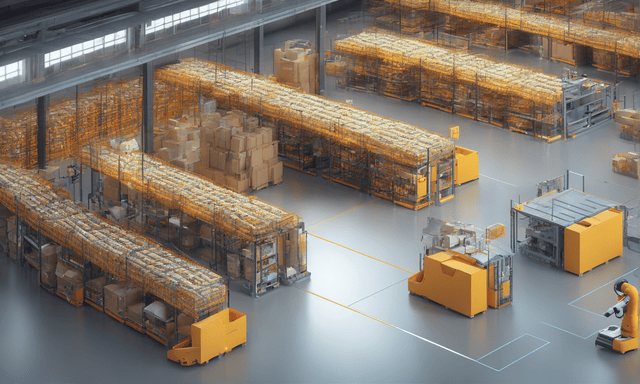
What are the Warehouse Automation Categories?
As mentioned earlier, no matter how big or small your warehouse is, there are always ways to add automation to your operations. Let’s explore the 4 warehouse automation categories:
- Fundamental Warehouse Automation: This classification pertains to straightforward technology aimed at aiding tasks that would otherwise necessitate extensive manual effort. For instance, a conveyor or carousel relocates inventory between designated points.
- Warehouse System Automation: This category employs a synergy of software, machine learning, robotics, and data analytics to streamline tasks and protocols. Illustratively, a warehouse management system scrutinizes daily order requirements, prompting users to gather similar items in a single sweep. This eliminates unnecessary back-and-forth traversal.
- Mechanized Warehouse Automation: Here, robotic apparatuses and systems collaborate with human workers for seamless warehouse operations. An exemplar entails autonomous mobile robots lifting racks of products, conveying them to human pickers for sorting and retrieval.
- Advanced Warehouse Automation: This level integrates mechanized warehouse robotics and automation systems that can supplant labor-intensive human workflows. Consider a fleet of robotic forklifts equipped with advanced AI, cameras, and sensors. They navigate the warehouse and relay their locations to an online tracking portal, exemplifying a holistic solution.
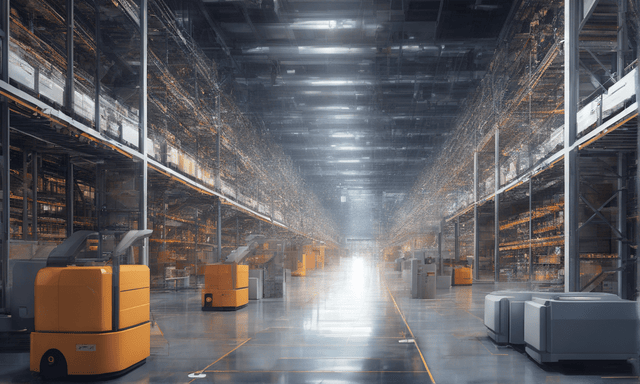
What are the Warehouse Automation Types?
Now that we know what Warehouse Automation is, why you should pay attention to it and we know what the categories are, let’s have a look at the Warehouse Automation Types:
- Goods-to-Person (GTP): An immensely popular approach for enhancing efficiency and minimizing congestion, GTP fulfillment employs mechanisms such as conveyors, carousels, and vertical lift systems. When applied adeptly, GTP systems can significantly amplify warehouse picking speed, potentially doubling or even tripling it.
- Automated Storage and Retrieval Systems (AS/RS): An iteration of GTP fulfillment, AS/RS integrates automated systems and equipment like material-carrying vehicles, tote shuttles, and mini-loaders for material or product storage and retrieval. These systems often find utility in high-volume warehouses with space limitations.
- Automatic Guided Vehicles (AGVs): Falling under the mechanized automation category, AGVs exhibit limited onboard computing capacity. They rely on magnetic strips, wires, or sensors to navigate predetermined paths within the warehouse. AGVs are well-suited for expansive, uncomplicated warehouse layouts, whereas intricate environments with substantial human activity and spatial restrictions might not be ideal settings.
- Autonomous Mobile Robots (AMRs): Offering greater flexibility compared to AGVs, AMRs utilize GPS systems to chart efficient routes within specific warehouses. Advanced laser guidance systems enable them to detect obstacles, enabling safe maneuvering in dynamic environments with significant human presence. AMRs are user-friendly in terms of programming routes and swift implementation.
- Pick-to-Light and Put-to-Light Systems: These systems involve mobile barcode scanning devices synchronized with digital light displays. They guide warehouse pickers on where to place or retrieve designated items, substantially reducing walking time and error occurrence, particularly in high-volume scenarios.
- Voice Picking and Tasking: Employing voice-guided warehouse procedures, known as pick-by-voice, this technique employs speech recognition software and mobile headsets. It streamlines picking and storage tasks by generating optimized pick paths, eliminating the need for handheld devices like RF scanners. This not only enhances efficiency but also augments safety.
- Automated Sortation Systems: Sortation entails recognizing items on a conveyor system and diverting them to designated warehouse locations using tools like RFID, barcode scanners, and sensors. These systems are pivotal in various order fulfillment stages – receiving, picking, packing, and shipping.
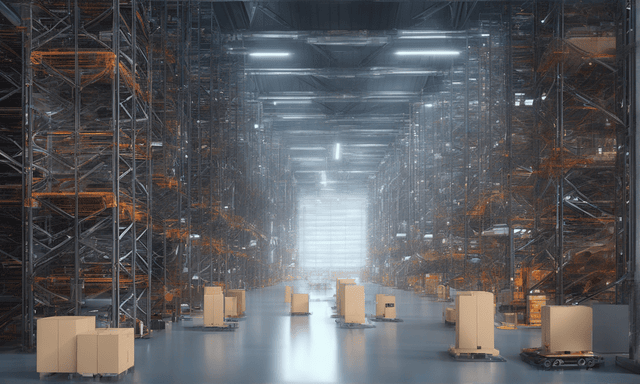
How to Start with Warehouse Automation
Starting with warehouse automation and further automating your warehouse is very personal. If you’re just starting off, you might want to start by reading a lot of information online and finding relevant case studies. Second, you might want to talk to an advisor to make a detailed plan.
Here’s a quick guide on what you can keep in mind when working on Warehouse Automation:
- Assessment and Analysis: Begin by thoroughly assessing your current warehouse operations. Identify pain points, bottlenecks, and areas that could benefit from increased efficiency. Analyze data on order volumes, inventory turnover, and peak demand periods to gain insights into where automation can have the most impact.
- Set Clear Objectives: Define your goals for warehouse automation. Whether it’s reducing fulfillment times, minimizing errors, or optimizing inventory management, clarity on your objectives will guide your automation strategy.
- Start Small: Begin with a pilot project. Choose a process that’s relatively simple yet impactful, such as automating order picking in a specific product category. This allows you to test the waters, measure results, and learn from the experience before scaling up.
- ROI Assessment: Evaluate the return on investment (ROI) for each potential automation initiative. Consider factors like labor cost savings, increased throughput, error reduction, and improved customer satisfaction. Prioritize projects with higher potential ROI.
- Technology Selection: Research and select automation technologies that align with your objectives. Whether it’s robotics, conveyor systems, or software solutions, choose technologies that can seamlessly integrate into your existing infrastructure and workflow.
- Change Management: Introducing automation will impact your workforce. Communicate the benefits of automation to your employees and involve them in the process. Offer training to ensure a smooth transition and address any concerns.
- Data Integration: Ensure that your automation systems can communicate with your existing software platforms, such as inventory management and order processing systems. Utilizing robust data integration tools is crucial for achieving real-time visibility and effective decision-making.
- Scalability: Consider the scalability of your chosen automation solutions. Will they accommodate future growth and changing demands? Investing in technologies that can evolve with your business saves time and resources down the line.
- Continuous Improvement: Automation is an ongoing journey. Regularly assess the performance of your automated processes and identify areas for optimization. Keep an eye on emerging technologies that can further enhance your operations.
- Feedback Loop: Maintain an open feedback loop with your team and customers. Their insights can help fine-tune your automation initiatives and ensure they align with evolving needs.
Before reaching out to Warehouse Automation Advisors, it’s good to have an understanding of what is possible, where your bottlenecks are, and the opportunities you have already identified.
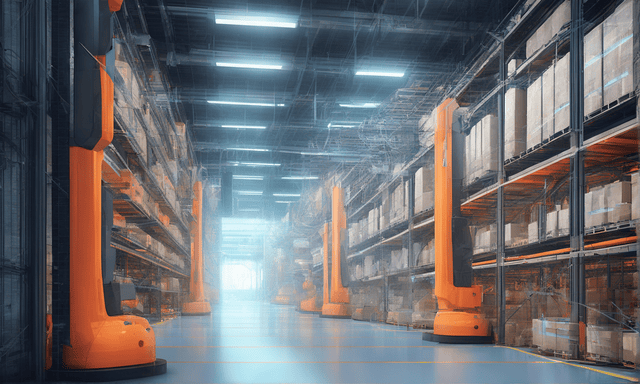
What are the main Warehouse Automation Trends?
To help you find warehouse automation opportunities, let’s have a look at a couple of Warehouse Automation Trends:
- Robotic Process Automation (RPA): Robotic process automation involves using software robots to automate rule-based tasks. In warehouses, this can include tasks like data entry, order processing, and inventory tracking. RPA improves accuracy and efficiency by reducing human errors.
- Artificial Intelligence (AI) and Machine Learning: AI and machine learning are being applied to enhance warehouse operations. These technologies analyze data to optimize inventory levels, predict demand patterns, and improve routing and scheduling for efficient order fulfillment.
- Autonomous Mobile Robots (AMRs): AMRs are versatile robots that can navigate warehouse environments without fixed infrastructure like magnetic strips or wires. They use sensors and advanced algorithms to safely move around obstacles, making them ideal for dynamic environments with changing layouts.
- Collaborative Robots (Cobots): Cobots are designed to work alongside human workers. In warehouses, they can assist with tasks that require human dexterity and decision-making, such as order picking and packing. Cobots enhance productivity while maintaining a collaborative and safe workspace.
- Microfulfillment Centers: Microfulfillment centers are compact, automated warehouses located in urban areas. They enable retailers to fulfill online orders quickly and efficiently, catering to the growing demand for same-day or next-day deliveries.
- Voice and Augmented Reality (AR) Technologies: Voice picking and AR technologies provide hands-free guidance to warehouse workers. Voice systems offer verbal instructions, while AR overlays digital information onto real-world views, aiding in tasks like order picking and inventory locating.
- Predictive Analytics for Maintenance: Predictive analytics use sensor data and AI to predict when equipment might fail. This proactive approach to maintenance helps prevent downtime by allowing maintenance teams to address issues before they escalate. It’s essential for businesses to also explore reliable power supply solutions for industrial equipment. For insights on robust power supply considerations, you can explore the informative content at Bravo Electro.
- Green and Sustainable Automation: With a growing emphasis on sustainability, warehouses are adopting energy-efficient automation solutions. This includes using renewable energy sources, optimizing energy consumption, and designing automation systems with eco-friendly materials.
- Blockchain for Supply Chain Transparency: Blockchain technology is being integrated into warehouse operations to enhance supply chain transparency. It provides an immutable record of every transaction and movement, reducing fraud and ensuring traceability.
- On-Demand Warehousing: On-demand warehousing platforms allow businesses to flexibly access warehouse space and services as needed. This trend caters to fluctuating demand and helps companies expand their reach without investing in permanent facilities.
- Cloud-based Warehouse Management Systems (WMS): Cloud-based Warehouse Management Systems (WMS) are software solutions that facilitate the efficient management and optimization of warehouse operations through a cloud computing infrastructure. Unlike traditional WMS that are hosted on-premises, cloud-based WMS are hosted and accessed over the internet.
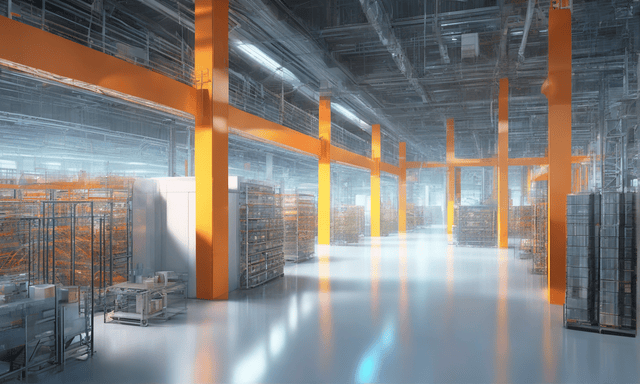
Warehouse Automation Statistics
Let’s wrap up the article with a couple of Warehouse Automation Statistics worth knowing:
- €24.8 billion increase (10.41% CAGR) is predicted in the global warehouse automation market by 2026, highly influenced by e-commerce growth.
- Use of AGVs (automated guided vehicles) in 2021 held steady from 2020, with 6% currently using and 14% considering/evaluating.
- 7% sturdy use of Robotics in warehouses for automation systems in 2021.
- 20% of organizations are considering/evaluating robotics for warehouse operations in 2021.
- By 2026, The global warehouse automation market is estimated to surpass 30 billion U.S. dollars.
- 4 million commercial warehouse robots are to be installed in over 50,000 warehouses by 2025
- 27% of decision-makers from Manufacturing, Transportation & Logistics, and other departments plan to utilize full automation by 2024.
- The number of private warehouses is growing. According to data from the U.S. Bureau of Labor Statistics, there are 18,182 private warehousing establishments as of 2018, up from 15,203 in 2008
- Warehouses are increasing in size, as well. The average size of warehouses in 2000 was about 65,000 square feet, compared to about 181,370 square feet in 2017, according to a 2017 report from Westernacher Consulting. According to the report, “The increase in size helps warehouses to cope with higher volumes and a growing number of SKUs. However, rising costs and long traveling distances in large warehouses are making size expansion less effective in addressing operational challenges.”
- Distribution centers are growing in size. The average square footage of distribution centers in 2016 was 539,000, increasing to 473,400 in 2017 and 672,080 in 2018. The median square footage of distribution centers was 240,410 in 2016, 176,600 in 2017, and 305,000 in 2018.
- Distribution centers are expanding vertically, as well. According to Logistics Management, the average clear height of distribution centers was 32.7 feet in 2018, an increase from 31.1 feet in 2016.
- The demand for warehouse space drives up prices. Westernacher Consulting explains, “As warehouses demand more space, this naturally pushes up price. In fact, between 2011 and 2015, warehouse renting rates were up by a whopping 28.7%. This trend is likely to continue as the US Industrial Space vacancy rate falls to 5.3% in Q1 2017, the lowest since 2008.”
FAQ
What is warehouse automation?
Warehouse automation involves using technology and machinery to perform warehouse tasks with minimal human intervention, enhancing efficiency and accuracy.
What are the benefits of warehouse automation?
Benefits include increased efficiency, reduced operational costs, improved accuracy in inventory management, and enhanced safety in warehouse operations.
What types of technologies are commonly used in warehouse automation?
Common technologies include conveyor systems, automated storage and retrieval systems (AS/RS), robotics, barcode scanners, and warehouse management software.
How does warehouse automation impact labor in the warehouse?
Automation can shift the focus of labor from manual tasks to more skilled operations, such as system management and maintenance.
What are the challenges of implementing warehouse automation?
Challenges include high initial costs, integration with existing systems, training employees, and ensuring flexibility for future changes.
How can warehouse automation improve inventory management?
Automation improves inventory management through accurate tracking, real-time updates, and reducing errors in inventory handling and storage.
What is the role of robotics in warehouse automation?
Robotics play a key role in automating repetitive tasks like picking, packing, and sorting, enhancing speed and reducing manual errors.
How does warehouse automation contribute to supply chain efficiency?
It streamlines warehouse operations, ensures faster and more accurate order fulfillment, and contributes to overall supply chain optimization.
Can small and medium-sized warehouses benefit from automation?
Yes, even small and medium-sized warehouses can benefit by implementing scalable and modular automation solutions tailored to their specific needs.
How does warehouse automation adapt to different product types and sizes?
Advanced automation systems are designed to be versatile and adaptable, handling a range of product types and sizes with adjustable settings and modular components.
What are the environmental benefits of warehouse automation?
Warehouse automation can lead to more efficient use of energy and resources, reduced waste, and potentially a smaller carbon footprint due to optimized operations.
How does warehouse automation impact order processing speed and accuracy?
Automation significantly speeds up order processing and increases accuracy by reducing manual handling and human errors in order picking and packaging.
Can warehouse automation be integrated with existing warehouse management systems?
Yes, many automation solutions are designed to integrate seamlessly with existing warehouse management systems (WMS) to enhance functionality and data flow.
What is the future outlook for warehouse automation technology?
The future of warehouse automation includes more advanced robotics, AI and machine learning integration, increased IoT connectivity, and potentially autonomous vehicles.
How does warehouse automation handle peak demand periods?
Automation systems can be scaled up or optimized to handle increased loads during peak periods, ensuring consistent performance even under heightened demand.
What are the safety considerations with warehouse automation?
Safety considerations include ensuring proper machine maintenance, implementing safety protocols, and providing training for employees to work safely alongside automated systems.
How does warehouse automation affect shipping and receiving operations?
Automation streamlines shipping and receiving processes, allowing for faster unloading, sorting, and dispatching of goods, and improving overall turnaround times.
What training is required for employees in an automated warehouse?
Employees need training in operating automated systems, understanding new workflows, and in some cases, basic troubleshooting and maintenance skills.
How does warehouse automation aid in data collection and analysis?
Automated systems collect vast amounts of operational data, which can be analyzed for insights into process improvements, inventory optimization, and demand forecasting.
What is the role of drones in warehouse automation?
Drones in warehouse automation are emerging for tasks like inventory scanning, surveillance, and in some innovative cases, moving lightweight items within the warehouse.
How does warehouse automation impact customer satisfaction?
Automation can lead to faster order fulfillment, improved accuracy, and better stock management, all of which contribute to higher customer satisfaction.
What are the cost implications of implementing warehouse automation?
While initial setup costs can be high, long-term savings are achieved through increased efficiency, reduced labor costs, and lower error rates.
Can warehouse automation be customized for specific industry needs?
Yes, automation solutions can be tailored to meet the unique requirements of different industries, such as food and beverage, pharmaceuticals, or e-commerce.
How does warehouse automation integrate with supply chain management?
Automated warehouses provide real-time data and improved efficiency, which enhances overall supply chain visibility and coordination.
What is the significance of Artificial Intelligence (AI) in warehouse automation?
AI plays a key role in optimizing operations, predicting maintenance needs, and enhancing decision-making processes in warehouse automation.
How can small-scale businesses approach warehouse automation?
Small-scale businesses can start with modular and scalable automation solutions that match their budget and operational needs, gradually increasing automation as they grow.
What are automated guided vehicles (AGVs), and how are they used in warehouses?
AGVs are mobile robots used for transporting goods within a warehouse, improving material handling efficiency and reducing manual labor.
How does warehouse automation contribute to inventory accuracy?
Automation minimizes manual counting errors, provides real-time inventory tracking, and ensures precise stock levels are maintained.
What is the role of cloud computing in warehouse automation?
Cloud computing facilitates the storage and analysis of large amounts of data generated by automated systems, enabling better accessibility and scalability.
Can warehouse automation respond to changing market trends and demands?
Advanced automated systems are capable of adapting to market changes by adjusting operational parameters, optimizing workflows, and scaling capacity as needed.
Sources:
https://data.bls.gov/timeseries/ENUUS000205493?data_tool=XGtable
https://www.zebra.com/content/dam/zebra_new_ia/en-us/solutions-verticals/vertical-solutions/warehouse-management/vision-study/2024/warehouse-vision-study-en-us.pdf
https://www.roboticsbusinessreview.com/wp-content/uploads/2019/10/RiseOfTheWarehouseRobots-LogisticsIQ.pdf
https://www2.deloitte.com/us/en/pages/operations/articles/supply-chain-leadership.html
https://westernacher-consulting.com/wp-content/uploads/2017/11/Whitepaper_Trend_to_Automation_FINAL_s.pdf
https://data.bls.gov/timeseries/ENUUS000205493?data_tool=XGtable
https://www.logisticsmgmt.com/article/2018_warehouse_distribution_center_survey_labor_crunch_driving_automation
Other related articles
Create more and better content
Check out the following resources and Grow!